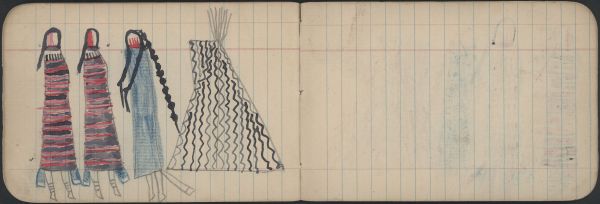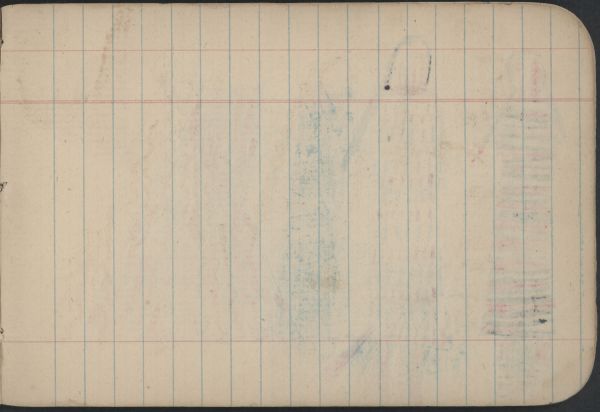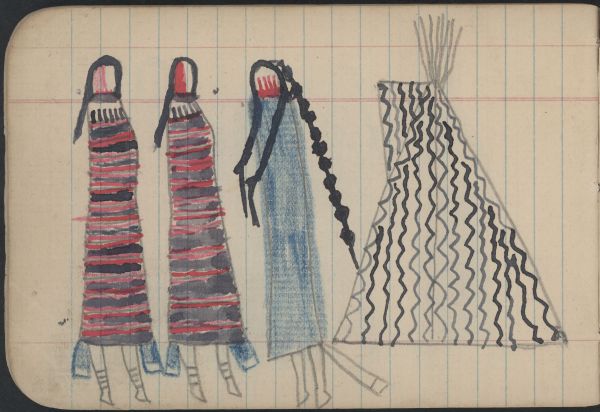COURTING: White Tipi with Black Power Lines, Man in Blue Blanket, and Two Women in First Phase Havajo Chief's Blanket; Blank Page
Ethnographic Notes
Right (page 16): Blank. Left: Two women in black-and-red striped blankets (first-phase Navajo chief's blankets) stand with a man in a blue blanket with concho hairpiece beside a tipi painted with jagged black lines. The man and two women have pronounced hoof-like feet (see Plate 2 notes). The tipi, to the viewer�s far right, is outlined in pencil with jagged pencil lines alternating with black jagged lines as decoration. The first figure is a man wrapped in a blue blanket. He has two braids; attached to his scalplock and trailing behind head is an ornament of German silver hair plates, depicted in black watercolor. His face is painted red in the same pattern as the previous image. His legs and breechclout are only outlined in pencil. The middle figure and left figure are women in identical striped blankets: red stripe, black stripe, red stripe, pencil stripe, red stripe, black stripe, red stripe, pencil stripe, red stripe, black stripe, etc. The right halves of both middle and left women�s faces are painted red. They both have a black band around the neck, perhaps choker necklaces. Their stroud dress panel inserts are depicted in blue crayon with white selvedges at the edges. Both have pencil outlined legs and feet, hoof-like, with the middle woman having three bands around her ankles. The other woman has four bands up from feet. Color symbolism was important to Cheyenne ledger artists. The colors black and blue were feminine. Cowdrey writes about the persistent occurrence of the color dyad of red and black: �Red symbolizes the sun, the phallus, and all things masculine; black denotes night and death, the womb, and all things feminine� (1999: 46). Imre Nagy also describes the duality of masculine and feminine as an ever-present dynamic, where balance is constantly moving between the two spheres (�Cheyenne Shields and Their Cosmological Background.� American Indian Art Magazine 19.3 [summer 1994]: 40). Media: Pencil outlines are filled with blue crayon and red water color.


